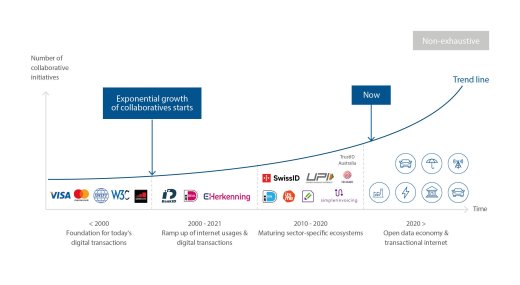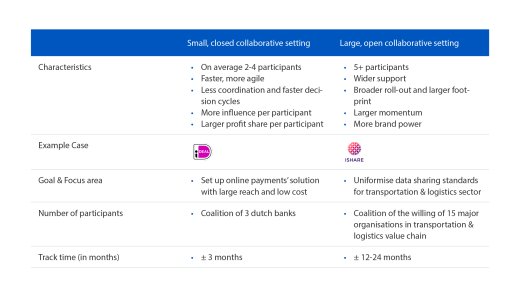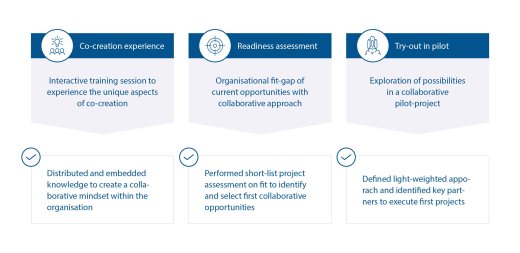Size doesn’t matter when it comes to collaboration
Strategic partnerships are an emerging trend in today’s digital era. Organisations are increasingly seeking each other out in order to stay relevant and secure their future success. It can pay off to start small, because getting the best out of any collaborative initiative actually depends less on the size of the partnership and more on the clarity of your own intentions.
While several key platform players have attracted particular attention in recent years due to their notable individual success, there has also been significant growth in the number of collaborative initiatives and their relevance. This is because more and more organisations are choosing to collaborate in response to the increasing complexity of digital transactions.
Transactional evolution
Collaborative initiatives have played a fundamental role in the digital economy for decades, but they are now becoming even more important in the open data economy.
Around 1990, key developments such as the rise of the internet and telecommunication infrastructure provided the foundation for today’s transactional economy. Examples of collaborative initiatives in this period include card schemes that enable digital payments irrespective of the bank used by payers and payees.
Towards the turn of the millennium, the internet’s rising popularity required a new set of services. Local digital payment and digital identity solutions (such as iDEAL in the Netherlands and BankID in Sweden) enabled trusted transactions on the internet.
In the past decade, local initiatives have extended their borders and the need for cross-border and cross-market collaboration has become pivotal. In addition to payments and identity, data transactions have become more dominant. The number of collaborative initiatives has grown exponentially.
Nowadays, markets increasingly require cross-sector collaboration with a focus on interoperability to enable the open data economy; if we want to achieve true interoperability, collaboration should not experience any boundaries in terms of sectors, countries or markets.
What you want to achieve
To get the best out of any collaborative initiative, you need a clear view of what your organisation wishes to achieve individually and an understanding of how exactly you hope to benefit from collaboration – e.g. to increase innovation by exchanging knowledge and best practices, to combine different perspectives and expertise on markets, customers and services, or to increase the reach of your services by combining your organisations’ customer base with those of other organisations.
This helps you to shape the discussion and the results within the collaborative environment, not least because the specialists acting on behalf of your organisation have a stronger mandate and results-oriented focus. Moreover, you can use the knowledge and expertise available in the collaborative setting to gain a competitive advantage, such as to shorten your time to market.
Choosing the right scale
Collaboration can be executed in either a small, closed setting or in a wider set-up. Collaboration in small, closed settings with a limited number of participants facilitates a fast and agile process to achieve the common goals. This type of collaboration allows each participant to have significant influence and a large share of the profit. It also gives you the opportunity to develop your collaborative capabilities.
Collaboration in large, open settings with an ever-growing number of participants generates wider support of the common goal. This type of collaboration results in a broad roll-out and larger footprint, as well as a strong brand. One example of this is the development of iSHARE, in which a coalition of 15 organisations in the transportation and logistics value chain collaborated for two years to develop Identification, Authentication and Authorisation standards for data sharing.
Developing collaborative capabilities takes time
Effective collaboration is not a given. It starts with clear ambitions and requires considerable effort and careful consideration. However, it can pay off to start small because it will give you the opportunity to develop the necessary collaborative capabilities to take the next step in your digital transformation. Size doesn’t matter; having the right strategy does.
Are you interested in exploring the opportunities for collaboration and are you wondering where and how to start? At INNOPAY, based on our 20-plus years of experience of supporting, guiding and facilitating collaborative projects, we offer various options to help you start building your collaborative capabilities, such as co-creation training, readiness assessments and even try-out pilot settings. Get in touch to discuss these and other opportunities.








